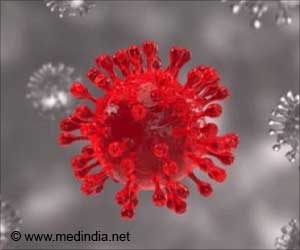Omicron's latest subvariant BA.2.12.1 shows no signs of decline even over two years after it was first detected in humans.

‘Other mutations include BA.4 and BA.5, recently identified by scientists in South Africa. It has led to a fresh wave of Covid in the country.’





Preliminary research suggests it is about 25 per cent more transmissible than the BA.2 subvariant that is currently dominant nationally, according to the Centers for Disease Control and Prevention. According to virologists, although the SARS-CoV-2 virus has repeatedly changed its structure and chemistry, it still has abundant evolutionary space to explore, Washington Post reported.
Omicron BA.2.12.1 Variant
While existing vaccination can still reduce the risk of severe Covid disease, the variants can evade many of the neutralising antibodies that are the immune system's front line of defence."It's evolving at a fairly rapid rate. I do think we need to aggressively consider whether we should update vaccines, and do it soon," Jesse Bloom, a computational biologist at the Fred Hutchinson Cancer Research Center in Seattle was quoted as saying.
"The evolution is much more rapid and expansive than we initially estimated," added Michael Osterholm, infectious-disease expert at the University of Minnesota.
Advertisement
Besides South Africa, the sub variants have also been detected in more than 20 countries including Australia, Austria, Belgium, China, Israel, Denmark, France, Germany, Pakistan, UK, US and Switzerland.
Advertisement
The recombination process is the origin of what's known as Omicron XE. That recombinant probably emerged from a person co-infected with the original Omicron variant and the BA.2 subvariant.
It was always possible in theory, but the identification of actual recombinants provides "proof of concept," Jeremy Luban, a virologist at the University of Massachusetts Medical School was quoted as saying.
The worst-case scenario would be the emergence of a variant or recombinant that renders current vaccines largely ineffective at blocking severe disease. But so far, that hasn't happened. And no "recombinant" has spread like Omicron or other recent variants and sub-variants, the report said. <
Source-IANS










